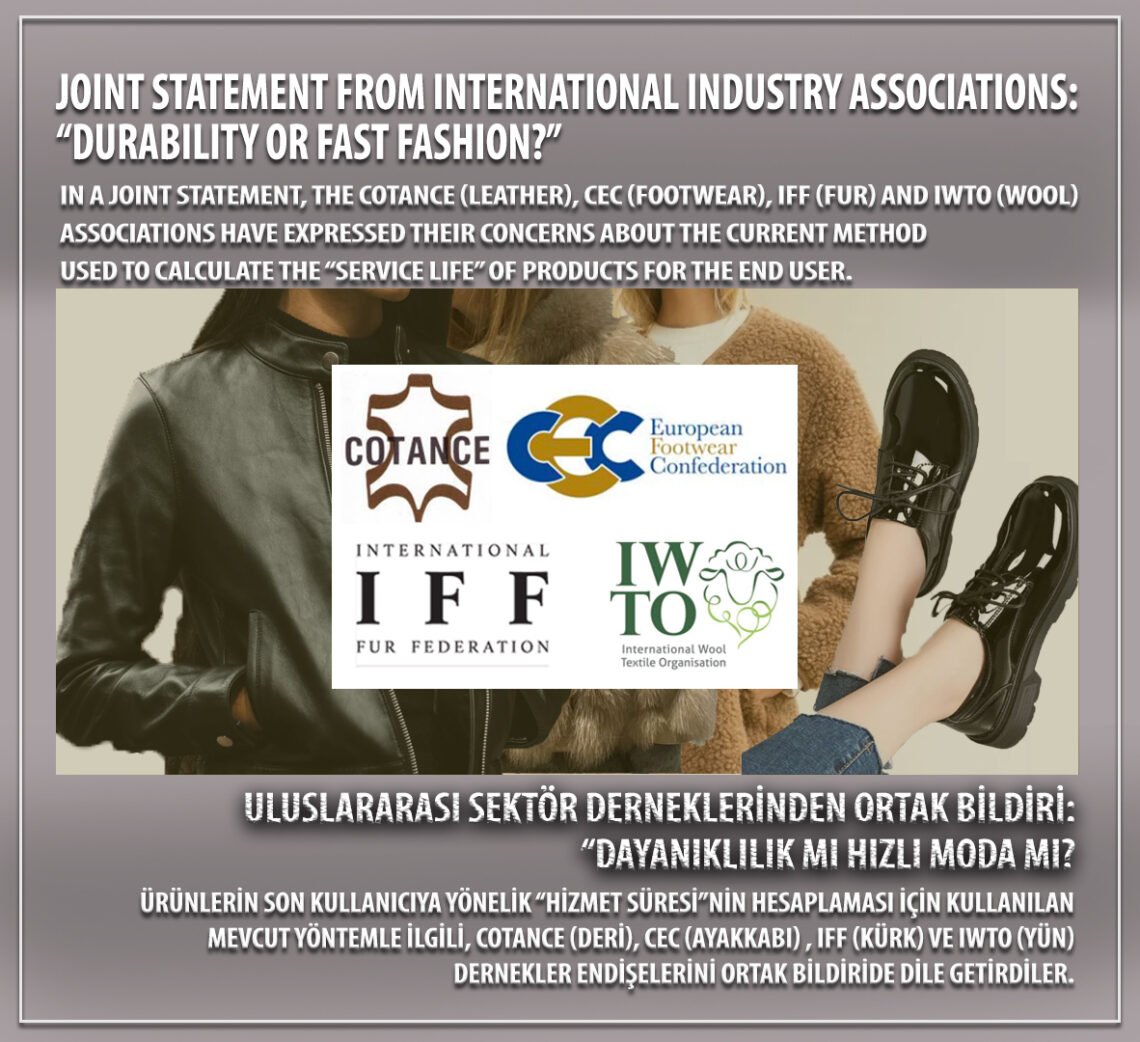“Durability or Fast Fashion?”
In a joint statement, the COTANCE (Leather), CEC (Footwear), IFF (Fur) and IWTO (Wool) associations have expressed their concerns about the current method used to calculate the “Service life” of products for the end user.
In a joint statement, COTANCE, the European leather industry committed to sustainability and the recognition and acceptance of the sustainability attributes of leather, and stakeholder associations CEC, IFF and IWTO have raised significant concerns about the current methodology used to calculate the “Service Life” of apparel and footwear products. The four organizations issued a joint statement addressed to the Technical Secretariat of the Category of Product Environmental Footprint Standards (Pefcr) for Apparel and Footwear (A&F).
What is wrong with current clothing and footwear durability measurements? According to the four organizations representing leather, footwear, fur and wool, they penalize natural and longer-lasting materials and the consumer products made with them.
The main concern lies in the unit of measurement adopted by the Technical Secretariat, which developed the methodology and representativeness of the default values for durability of clothing and footwear products taken from Higg.
The signatories of the joint statement object to the measure being expressed in a series of “uses” rather than in “years” in real time. The four associations explain that this approach, taken from the Higg Product Module, “does not reflect the actual lifetime of products or the views of all stakeholders in the industry.” Furthermore, neither product segmentation nor default values for service life take into account the unique characteristics of different materials. “As a result, the method favors products that are purchased and discarded after a few ‘uses’ and penalizes those that are designed to last much longer than the method can deliver,” the signatories of the joint statement said. The organizations, representing the views of the footwear, fur, leather and wool industries, recommend that service life be expressed in years rather than usage and that the durability properties that materials impart to products be appropriately integrated into product segmentation or reference flow. “This change will provide a more accurate and meaningful assessment of a product’s lifetime, helping both consumers and manufacturers make informed decisions,” they say.








